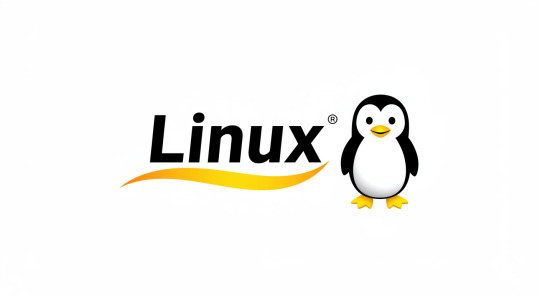#android kernels
Explore tagged Tumblr posts
Text
New drawing tablet moment



#I am too insanely proud of that Edgar look at him. look at my boy#Okay it's like half 7 in the morning I've been watch Hbomberguys new video lol#Electric Dreams#Electric Dreams 1984#2001 aso#2001 a space odyssey#object head#object head oc#objectum#android.txt#android arts#Android OC's#OC Kernel
46 notes
·
View notes
Text
Unlocking the Future with Android 14 on Toradex Verdin AM62: Introducing Our Custom GStreamer Plugin
We at Silicon Signals are excited to share our most recent accomplishment: the successful deployment of Android 14 on the Dahlia Carrier Board of the Toradex Verdin AM62 System on Module (SoM). This achievement not only expands the Verdin AM62 platform's functionality but also gives developers access to our proprietary GStreamer plugin, which gives them previously unheard-of flexibility and control.
Standard vs. Silicon Signals Custom GStreamer Plugin
The integration of our proprietary GStreamer plugin, which greatly improves the media rendering experience, is one of our implementation's most notable features. The following differs our Silicon Signals solution with conventional implementations:
youtube
Standard
Silicon Signals Custom GStreamer Plugin
Location Control
Random Location
Exact X, Y Coordinates
Time Efficiency
Time Consuming
Quick Setup with Precise Placements
Control Flexibility
Limited Control
Custom Coordinates and Full Control
Rendering Consistency
Unpredictable
Consistent Results with Defined Parameters
For developers, standard implementations frequently lead to unpredictable and time-consuming video rendering locations. Silicon Signals, on the other hand, gives developers exact control over rendering through our proprietary plugin, which enables them to set precise X and Y coordinates for video placement. Applications that demand a high level of accuracy and dependability are made possible by this flexibility, which guarantees consistent results.
Conclusion: Powering Innovative Solutions
Developers now have more options thanks to the successful port of Android 14 to the Toradex Verdin AM62 using the Dahlia Carrier Board. When used in conjunction with our proprietary GStreamer plugin, this solution gives you unparalleled control and precision when creating media-rich applications.
At Silicon Signals, we're committed to expanding the possibilities of embedded systems and assisting our customers in realizing their visions. Please get in touch with us if you would like to discuss how our solutions can improve your projects!
Let's work together to influence embedded technology's future.
#embeddedtechnology#embeddedsoftware#linux kernel#android#androidbsp#verdin#toradex#nxp#imx#gstreamer#Youtube
2 notes
·
View notes
Text
If things continue to occur, I may just fall apart irreparably like a nature valley bar
#s#skye's musings#context is my phone is crashing a lot more than it reasonably should#and frankly i want it to Not Do That.#like??? huh??????#what the hell do you MEAN‚ ''Direct firmware load failed''???#that's like 4 different device drivers you just listed with that error???#never experienced a kernel panic on an android device before this phone came along#i should *not* have to run dumpstate this many times in the span of three months#especially not on a phone that's apparently supposed to be a ''better'' version of the original model
0 notes
Text
Straight up comparing it, and by it... well let's just say... Kernel device trees

1 note
·
View note
Text
Linux: un sistema operativo potente y gratuito
Linux: El sistema operativo que usas sin saberlo Desde la llegada de los sistemas operativos, las computadoras se volvieron más accesibles para el público general. Con Windows y sus interfaces gráficas, su uso se masificó hasta el punto en que hoy casi todo el mundo tiene un ordenador en casa. Pero hay un sistema operativo que probablemente usas todos los días sin siquiera notarlo: Linux. A…

View On WordPress
#andrew tanenbaum#android#aosp#australia#computador#computadora#debian#disco duro#dos#fedora#gnu#gnu/linux#goobuntu#hardware#kernel#linus torvalds#linux#linux mint#live cd#macos#maquina virtual#minix#ordenador#pinguino#ram#richard stallman#servidores web#sistema operativ#software#ubuntu
1 note
·
View note
Text

Monstertober & Yantober Day 3: AI, Secret Collection ft. Yan!Android
content: gender neutral reader, AI yandere, suggestive
"I'm truly sorry for troubling you like this", your synthetic partner repeats, visibly embarrassed.
You pat his shoulder reassuringly.
"Hey, it's faster than going through all the security checks at the border. I may be no Spacer engineer, but I can still have a look at your kernel to check what’s wrong."
You wait for the screen to load as the man sits patiently next to you, adjusting the cables presently plugged into the nape of his neck.
"Just a lot of overhead, really", you conclude, glancing over the processes. "Nothing a little decluttering can't fix."
One folder immediately catches your attention. It's not part of the system management, yet it seems to occupy a tremendous amount of memory space. You hum to yourself, deciding to investigate.
The files flood your screen: thousands upon thousands of documents, photos, and videos of you. Personal information, family albums, images taken from your investigations, as well as recordings of your intimate moments, followed by written commentary. It appears that your romantic escapades with the android coworker have been thoroughly analyzed for improved efficiency.
"Did you record every time we-"
Your computer goes black for a brief moment. The incriminating folder is now locked under a big, bold warning: unauthorized access.
"I'm afraid that's rather confidential, (Y/N)", he retorts, avoiding your gaze. "It is my private collection."
You take a moment to gather your thoughts, going over the sheer madness you just witnessed.
"I'm not that hard to satisfy", you finally remark, still hung on the essay pages regarding your sexual arousal.
"Not at all, no", he says as a faint grin forms on his face. "I simply prefer to be thorough in my research. You will agree, I hope, that no other partner could possibly compete with my performance.
That is to say, I have merely ensured that I am the best fit for you."

[Navigation] | [Ozztober Masterlist] | [Yandere Android]
#ozztober#yantober#monstertober#yandere android#android x reader#ai x reader#robot x reader#robot x human#yandere#yandere x reader#yandere scenarios#yandere imagines#terato#monster fucker
2K notes
·
View notes
Note
Thoughts on Linux (the OS)
Misconception!
I don't want to be obnoxiously pedantic, but Linux is not an OS. It is a kernel, which is just part of an OS. (Like how Windows contains a lot more than just KERNEL32.DLL). A very, very important piece, which directly shapes the ways that all the other programs will talk to each other. Think of it like a LEGO baseplate.

Everything else is built on top of the kernel. But, a baseplate does not a city make. We need buildings! A full operating system is a combination of a kernel and kernel-level (get to talk to hardware directly) utilities for talking to hardware (drivers), and userspace (get to talk to hardware ONLY through the kernel) utilities ranging in abstraction level from stuff like window management and sound servers and system bootstrapping to app launchers and file explorers and office suites. Every "Linux OS" is a combination of that LEGO baseplate with some permutation of low and high-level userspace utilities.
Now, a lot of Linux-based OSes do end up feeling (and being) very similar to each other. Sometimes because they're directly copying each other's homework (AKA forking, it's okay in the open source world as long as you follow the terms of the licenses!) but more generally it's because there just aren't very many options for a lot of those utilities.
Want your OS to be more than just a text prompt? Your pick is between X.org (old and busted but...well, not reliable, but a very well-known devil) and Wayland (new hotness, trying its damn hardest to subsume X and not completely succeeding). Want a graphics toolkit? GTK or Qt. Want to be able to start the OS? systemd or runit. (Or maybe SysVinit if you're a real caveman true believer.) Want sound? ALSA is a given, but on top of that your options are PulseAudio, PipeWire, and JACK. Want an office suite? Libreoffice is really the only name in the game at present. Want terminal utilities? Well, they're all gonna have to conform to the POSIX spec in some capacity. GNU coreutils, busybox, toybox, all more or less the same programs from a user perspective.
Only a few ever get away from the homogeneity, like Android. But I know that you're not asking about Android. When people say "Linux OS" they're talking about the homogeneity. The OSes that use terminals. The ones that range in looks from MacOS knockoff to Windows knockoff to 'impractical spaceship console'. What do I think about them?
I like them! I have my strongly-felt political and personal opinions about which building blocks are better than others (generally I fall into the 'functionality over ideology' camp; Nvidia proprietary over Nouveau, X11 over Wayland, Systemd over runit, etc.) but I like the experience most Linux OSes will give me.
I like my system to be a little bit of a hobby, so when I finally ditched Windows for the last time I picked Arch Linux. Wouldn't recommend it to anyone who doesn't want to treat their OS as a hobby, though. There are better and easier options for 'normal users'.
I like the terminal very much. I understand it's intimidating for new users, but it really is an incredible tool for doing stuff once you're in the mindset. GUIs are great when you're inexperienced, but sometimes you just wanna tell the computer what you want with your words, right? So many Linux programs will let you talk to them in the terminal, or are terminal-only. It's very flexible.
I also really, really love the near-universal concept of a 'package manager' -- a program which automatically installs other programs for you. Coming from Windows it can feel kinda restrictive that you have to go through this singular port of entry to install anything, instead of just looking up the program and running an .msi file, but I promise that if you get used to it it's very hard to go back. Want to install discord? yay -S discord. Want to install firefox? yay -S firefox. Minecraft? yay -S minecraft-launcher. etc. etc. No more fucking around in the Add/Remove Programs menu, it's all in one place! Only very rarely will you want to install something that isn't in the package manager's repositories, and when you do you're probably already doing something that requires technical know-how.
Not a big fan of the filesystem structure. It's got a lot of history. 1970s mainframe computer operation procedure history. Not relevant to desktop users, or even modern mainframe users. The folks over at freedesktop.org have tried their best to get at least the user's home directory cleaned up but...well, there's a lot of historical inertia at play. It's not a popular movement right now but I've been very interested in watching some people try to crack that nut.
Aaaaaand I think those are all the opinions I can share without losing everyone in the weeds. Hope it was worth reading!
224 notes
·
View notes
Text

"For the last time, that poem isn't romantic! It's insulting," Revati yelled over her shoulder as she began to pedal.
The layout of Olde Landon had been deliberately designed to keep tourists inside for as long as possible. There was only one way to access the front gates, and that involved defeating the Queen of Hearts' hedge maze. When the park was still open, tourists would be forced to spend at least an hour in the maze, stumbling upon tiny toy shops and food stands around every corner. The same thing occurred when they left, resulting in a very rich park and bankrupt guests. Now the maze was overgrown and easy enough to navigate.
Revati pedaled past the cart that once sold her heart-shaped sunglasses. Then she turned left, almost crashing into the wall of roses. The wall of roses stared back at her, their red blooms heavy and suspicious. Thanks to Bridgadeiro, she knew they were probably secretly insulting her.
The next turn consisted of an old stardust popcorn stand. Revati skidded to a stop and inspected the inside tray, where a few ancient kernels lay. Carefully, she picked up several of them and placed them in her jacket pocket. As far as she could tell, the kernels were seeds. Someone was shifting around the corner, causing the branches to shake.
"Aurora, is that you? Did you go ahead of me?" Revati yelled.
"While conferring in the labyrinth where false preachers reeked of death, the monster began to growl," a voice called from around the corner. An unfamiliar, flat female voice. Raiders. Raiders were, of course, an occupational hazard in any post-apocalyptic settlement. Normally, they never made it further than the broken glass pit at the park's gates. Sometimes Dityaa would bring one in, insisting they were "lovely," which always led to awkward dinners.
Revati slowly walked around the maze corner. There was a screeching metallic sound, and the weapon fell from Revati's hand. An android was slumped over on the ground. Once it would have been golden, but now it was rusty and covered in mud. Someone had ripped its legs off, leaving nothing but wires and tubes spitting bright blue fluid. Instead of a torso, there was a black empty hole with a concave door swinging on its bent hinges.
"And in the forgotten twists, footsteps quicken, hearts beat, and teeth are bared," the android chirped, its voice still distorted and far away. The android's face was a beautiful mask. Still-carved eyes. Unmoving sweet lips.
Revati powered up her solar gun and slowly walked forward, aiming it at the android. The android's metal eyes scraped in their sockets, turning towards her.
“Is that you? My darling Perdita?” The android’s voice whispered, the lips unmoving. The whispering voice had a posh lilt to its accent. Revati refused to answer. It was best to never engage with AI.
“Perdita, I clawed my way in! They know about you; the spider knows,” the android whispered before collapsing completely.
Revati slowly walked forward, still holding her weapon. With one foot, she kicked the android. It didn’t move. Its power had definitely died.
“Spider? Is that some sort of gang?” Revati whispered to herself. Gangs were always given stupid names.
“The spider is us; the spider is legion,” a flat robotic voice called out, and Revati spun around.
Queen Victoria was standing behind her, scorch marks all over her dress. A faint blue glow was erupting from beneath the skin of Queen Victoria’s chest.
#comic#magic#nanowrimo#nanowrimo2023#science fiction#creative writing#occ#speculative worldbuilding#speculative fiction#scifi#yafiction#scifi comedy#life on mars
554 notes
·
View notes
Text
Daily Linux propaganda
youtube
We have reached a point at which the game runs almost better on android phones than on most windows PCs because android uses the linux kernel.
#lol#lmao even#simming on linux#Youtube#i think this is a good testament to the fact that throwing money at the problem won't fix it
81 notes
·
View notes
Note
You have the right idea. Did you know that most android phones run on a modified Linux kernel? It is what allows them to be modified--or 'homebrewed'--with such ease.
A ROBOT SPIDEY?? hi wow :DDD that’s so cool
Indeed, I am a robot--an android, to be specific. I am Bridge, Nano-Spider from E-003B1U.
It is a pleasure to make your acquaintance, Miles Morales of E-1610.
#perhaps this is an info hazard for my own security#but I run on a modified kernel of Linux myself. Even that far into the future it is the superior operating system.#h.a.s.s.#humanoid android surveyor system#nano spider#spidersona#oc rp#.LOG
13 notes
·
View notes
Note
btw i keep meaning to ask..... do u have any oc lore for your sonas or silly guys??
okay i have had this one sitting here, waiting for the OC interest to re-awaken to the point I can go on big rants and well. today's the day~
I have like 4 main guys and only 1 of them really has anything substantial to talk about so we'll start there and branch off~
KERNEL!!!!!

(art by my friend @drwhattheheck <3)
Kernel is definitely my absolute baby when it comes to OCs. my self-made blorbo of all time. this thang takes over my brain and I just Don't Stop Thinking. Kernel was built as a helper robot at a space analysis lab, a real big one out in the middle of no where. Their main job is to receive, analyse, and log data coming in from the lab's research satellite (as well as helping out with menial tasks around the workplace). It's the first of it's kind!! They become so smitten with their research satellite, and that's the life they live for around 30 years.
Clashes with new special forces robots eventually leads to the partial destruction of the facility, whoever didn't die in the attack leaves for fear of their own safety. Kernel is left to take care of their creator, who is gravely injured. Before they pass they give Kernel an access key to their self-destruct code, considering they're a data collector in a confidential setting, it only makes sense. They go to hear the satellite one more time. and the satellite goes down.
Kernel is so broken up about everything, but knowing that they have an end is comforting. After everything is gone, he plugs in the self-destruct key. and it's well. not that. instead it hard-codes into Kernel very explicit instructions to live, a sense of self-preservation they where never supposed to have. and this crumbles them.
How is Kernel supposed to keep living with no task? no goal? everything that's ever been important to them is gone now. This all spirals him into a deep state of turmoil. for years, all he does is stay in his room, the room he used to share with his creator. Occasionally going out to try to pick-up the satellite's signal (to no success).
Inevitably, old-age hardware catches up to them. Their components' error rates keep getting worse, and the first failure to boot properly kicks their self-preservation code into high gear. They don't want it too, they want to fight against it but they just can't. They don't have any information about themselves and how they work, nor the knowledge to self-repair. They have to go find help.
They come across a practically abandoned lot of houses, their lab is located on the middle of no where so it makes sense there's not much civilisation around, but it's here they find a group of beings.

Medbot is well. a Medical robot! This particular model was only in use for a short period of time due to a design flaw. Her hands act as a multi-functional monitoring device, capable of monitoring heart-rate, temperature, and blood-pressure. While in an attempt to make the robots more personal so that patients would be comfortable, it resulted in the opposite affect. Patients found the robots at least awkward or at most invasive, the last of this line was shut off only 3 years after their introduction and then replaced with better designed Medbots.
This Medbot was specifically repowered by a girl with chronic pain, who remembers the line of medbots from when she was a kid and was always fascinated by them. They live together as partners, relying on each other for support in many ways.

Colon Three is! An oddity. No one really knows where he came from or what he was made for. He was found wondering by Medbot and now lives with them. He chooses to not speak, instead he communicates through emotions on his screen and body language. Colon Three is really into modification, and often performs modifications on himself in the name of style exploration. He's a lover of all things cute!!
While these three do not have the immediate resources to fix Kernel, they offer him a place to stay so he doesn't damage his hardware more, which he reluctantly accepts. They know there has to be some sort of blueprint in the lab for his design, and replacement parts, but this info is not something Kernel knows. Colon Three helps work on reverse engineering how Kernel works as much as it's comfortable for them and fixing what they can to prolong the time Kernel has. Medbot and her partner help Kernel with the rough emotional side of things, trying to find out who exactly Kernel was and how they ended up how it did.
Kernel finds a sense of companionship with these three, which is so. scary to them. They're so scared of losing everything again. But the joy this group brings Kernel gets to them. Kernel starts to grow fond of them. they start wanting to live again. Unexpectedly, A distress signal is sent out by the satellite, years after being out of action. And Kernel panics. Against all sense of self-presevation he now has he goes out frantically searching for it. And he finds her, as a wreckage further out in the opposite direction on the lab.
He completely breaks down at the sight of this, it's too much to process. His components start shutting off and he's completely powerless to stop it. Luckily, his friends where right behind him. Emergency procedures are made, connecting Kernel up to whatever power supply the satellite has left to keep electricity flowing through him. Kernel enters a low-power reserve mode, he's practically lifeless for this period of time. Colon Three (And a few others but those are like. friend OC cameos~) go out into the lab to search any sort of replacement parts, while Medbot and her partner monitor Kernel's condition.
Weeks pass like this, but the blueprints and the location of replacement parts are found. in a locked drawer on Kernel's creator's desk. (searching all around the facility only for it to be somewhere so. unimportant looking) and he comes back with what he needs. Repairs are made, and Kernel boots again.
With the resources to help Kernel with their hardware conditions, his friends are more than happy to help him understand himself more. This turns out to be in both a bodily sense and an emotional one. Things get better. And there's basically where I leave off this whole little story aha!!
I have. so many little ideas and details about these guys, especially Kernel, they're something so so special to me. Probably because I made em so they're so specifically suited to my taste in characters asdsdhdshsdds. I hope maybe if I ever get anything to do with them put out there properly, that other people will find something meaningful in them too~
#to me kernel is all about. grief and loss and how devastating it is. but also about friendship and companionship and trust#Kernel's friends care about him so much. they're really who saves him in the end. they care more than he could've ever imagined#it's also about moving on. from awful pasts you are powerless to change.#did you guys know I like my OC's....sdhdshdshsdds#thanks for the ask~ and sorry it took SO long to get too#was very busy. and tired. I did not have the processing power sdhdshdshds. but i hope maybe you enjoyed anyways~#Android Answers#Android.txt
4 notes
·
View notes
Text
A Fallen Savior excerpt from a future, un-named chapter <3
X’s eyes blearily opened, blinking to try to clear the sleep from them. He groaned as he attempted to sit up, his tangled mop of black hair clinging to his clammy face.
Why was he awake?
As the ancient android moved to wipe away the annoying strands of inky black and blue, a sudden jolt of pain lanced through his arm, the limb twitching and seizing for a few agonizing seconds before suddenly ceasing.
X gasped sharply at the pain, holding his breath before releasing it as the pain faded.
What the hell was that?!
With a shuddery whimper, the man quickly ran a diagnostics test on himself internally.
Everything was damaged now, when was it not?
Power core fluctuations were new, but not unexpected.
Wire degradation was also new, but he didn’t have the self-repair nanites to spare anymore…
His core was corrupting, slowly but surely. But again, that hadn’t been surprising.
Memory leak here, shorted cable there, cracked internal drives, yes, yes. This was all completely routine for X.
He wondered briefly how truly furious Cerveau would be if he could witness the depth of his rot.
Oh…there was something new.
Another jolt of pain ripped through him as his arm spasmed again, the man seething through his teeth, the pain so sudden, he couldn’t even produce sound.
New readings came across his mind.
:WARNING: CRITICAL POWER ERROR: KERNEL POWER EVENT ID 41
:LOCALIZATION: SHOULDER B
What?
X read the code over and over, trying to wrap his mind around it. He desperately wished his mind wasn’t slowing down with his core…
The answer popped into his head right as another strike of pain hit him. He whimpered through his teeth, gritting his eyes shut as the wave passed him.
The error flashed again.
Of course…there was THAT possibility…
But could it be…?
With great effort, X swung his legs over the side of his recharge bed.
He breathed heavily as his core began to heat up, his body warming as he forced himself to stand. His legs trembled for a moment, but held.
He hadn’t walked since Elpizo…
X grit his teeth, rocking a little as another wave struck him. Holding the spasming arm with his other hand at least kept him from bending it in the wrong way, potentially breaking it.
It didn’t help with the inferno of pain he felt in that moment.
As the wave passed, he let out the breath he hadn’t realized he’d been holding.
X looked at the door in front of him, already dreading the long journey ahead. He needed to get to Cerveau’s lab.
But that was on the other side of the floor, across the Command Room.
And…past Zero’s door.
He shook his head, trying to clear himself of the guilt that washed over him thinking about his dear husband.
He’d understand X’s decision…someday.
With an uneasy tremble to his legs, X took a step forward. His knee shook, but held his weight as he took another step.
Progress was agonizingly slow, he felt like he was moving in slow motion.
For a moment, the android felt confident in his legs, stepping quicker and giving his leg less time to adjust to his weight.
He briefly snickered to himself as he remembered how athletic he used to be.
Ah, to be a Maverick Hunter again, racing through the streets of Able City, patrolling with Zero and grabbing food at that lovely little café!
What was it called again…?
Where…?
With a yelp, X collapsed to the floor, his knee giving out underneath him as he was ripped from his memories.
Pain lanced through his arm again, causing him to nearly gag as he silently screamed into the floor where he fell.
What the hell happened?
He was there in Abel City again and then this!
X felt his chest tighten in panic.
He didn’t know where he was!
He looked around wildly until his eyes rested on his helmet, still resting proudly on the table next to his bed.
He blinked owlishly at it for a moment before everything came flooding back.
That was right…he was in the Resistance Base.
The Maverick Hunters were gone.
Abel City was destroyed.
The grief came and left faster than he had expected.
Last time this had happened, he had cried for a few moments before coming back to his senses.
Ah, right.
Memory leaks.
X sighed heavily, his shoulders slumping as he began to lose motivation. He wanted to go back to bed…
As another wave of pain struck him, and his teeth gritted tightly in agony, he remembered why it was so important to get to Cerveau’s lab.
“V….voltmeter…” X gasped, forcing his trembling legs back up.
With renewed determination, and a mounting sense of dread, X dragged himself towards the door.
Reaching it felt like a herculean task, but he knew that the real challenge lay ahead. His core raced, the rumbling of it audible in his aural cones.
Opening the door, his eyes adjusted to the dimly lit hallway. No sound came from either direction, nor any movement.
It must be the middle of the night.
Perfect.
He closed his eyes for a moment, trying to calm the raging sea of anxiety inside of him before he began.
There were too many things that could go wrong, too many things that could BE wrong! If he was telling the truth, he’s absolutely terrified of the implications of his ailment.
X thanked any higher power that would listen for the silent night as he used the wall as a crutch, leaning against it and dragging himself as quietly as possible down the hallway.
The android paused as he passed Zero’s door.
He briefly wondered if his husband would be willing to carry him the rest of the way…
He shook his head to clear the thought.
How selfish could he really be?
The idea of asking his husband to carry him to steal equipment from a comrade, and not allow him to ask any questions or make any move to change X’s fate made him feel dizzy with guilt.
He moved on as quickly as he could, leaving his longing at his husband’s door.
Progress felt even slower as the hallway stretched on and on. His arm continued to spasm, each time causing X’s knees to shake and his eyes to flicker from the intensity of hurt he was feeling.
With each passing wave, X’s anxieties about the cause grew, speeding his progress ever so slightly.
Finally, he reached the Command Center.
Looking around, he grimaced at the center platform.
He remembered the last time he had been here. He had slapped the former Commander for leading his fellow resistance members into a slaughter.
A new emotion came over him as he remembered that moment.
Disgust.
His eyes flickered as the pain failed to properly register this time, each wave becoming increasingly intense.
The disgust at the memory, however, remained crystal clear.
When the wave passed, X sighed but moved forward into the Command Center.
This was the part he was most worried about.
The center platform was connected on either side by a nearly railless walkway. It was wide enough to allow small carts and transports across, and was a useful place for gathering a large amount of people.
But the railless part was what made X swallow in fear.
His legs shook as he forced the limbs to move out onto the walkway, trying to keep from stumbling off of the side and into the wiring below.
He briefly wondered why he had approved this design before remembering it was simply a relic of this place being a former Maverick Hunter outpost.
Reploids didn’t need rails.
He fought the memory of visiting outposts just like this as his time as Commander of the 17th Unit from creeping over his already sluggish mind.
The voices of his subordinates crept at the corners of his hearing, their distant laughter and teasing haunting him like a ghost.
Mega Man X would not fall victim to the phantoms of his past!
The thought of his full title ripped him from reality, his subordinates' hands grabbing at his body and dragging him below into the murkiness of his past.
Faces blended and blurred, pain dancing alongside euphoria, it was like a carnival of nostalgia and agony.
He laughed and smiled as he tried to put names to faces, ecstatic at seeing his team again!
There was Marty! Or, was that Big Jack?
Retro! Or, what looked like Retro a moment ago now suspiciously looked like Diego…
Or…who was…
It was…
Zero’s face was crystal clear among the sea of eerie grins and morphing expressions.
He looked so sad…
X gasped sharply, his eyes staring below into inky darkness. His arm lay twisted at an odd angle behind his back, his other arm bracing him against the lip of the edge of the walkway.
He had collapsed, he must have!
The man used his remaining arm to push himself away from the edge, his legs scrabbling weakly behind him as he attempted to put his feet underneath him.
Why weren’t his legs working?!
Panic mounted again, his head swimming in confusion and dizziness. Everywhere he looked, he felt a new feeling of desperation overtake him.
Finally, in his growing panic, his eyes landed on the Command Center’s main console.
The raised platform was empty and dark now, the giant screen behind it turned off and blank, leaving the room in a strange, ambient gray.
X stared at it wide-eyed as memories came back to him.
That’s right…
Elpizo was up there, and Zero was next to me…
The realization that he had experienced another memory leak frightened him. He really needed to get back to his room, and gey hooked back up to his power supply.
He felt…disappointed in himself. He was better than this, wasn’t he?
How the mighty had fallen!
Sigma would laugh and sneer if he could see how low X had fallen.
In a way, he supposed, it was comforting.
It was comforting to know he had fallen, and could fall no further.
X stared out into the darkness, his legs shaking underneath him as he contemplated the depths of his fall from grace, willing the tears to stop welling in his eyes.
The android blinked as his vision briefly shut down. He braced for pain that never came, even when the spasms in his now, most likely, dislocated shoulder still caught his attention.
Uh-oh, that wasn’t good.
What was it Dr. Cain had said?
Ancient reploid model designs and diagnostics ran through his mind, hazy and murky as it was, he remembered something important.
A reploid unable to feel pain in a region of their body is a reploid in need of serious and immediate repair.
X snorted at the thought.
Yeah, no shit.
Creeping along, he blessedly made it to the other side of the room without further incident.
Catching himself against the door, he looked back, wondering how he was going to get back to his room without a mountain of luck.
He decided he’d cross that bridge when he came to it, figuratively and literally.
Blink! His vision flickered again.
The door to the small hallway leading to Ciel and Cerveau’s labs opened with a hiss. The space itself was lit with a single light, the glow from the lab doors locks giving off a homey, verdant ambience.
It was comforting, but X was determined not to get distracted more than he had.
Using the wall again, he dragged himself onward, nearly trembling in relief as he finally came close to Cerveau’s door.
A brief jolt of panic went through him as he realized Cerveau might be inside.
His mind raced with excuses he could tell the engineer, desperate to get out of the situation without a lecture. And without Zero finding out.
His mind was eased as he remembered that it was night time, and unlike the previous base, everyone actually had their own rooms.
Blink! Another flicker.
With a huff and a quick swipe of his credentials, the door to the lab whooshed open.
Inside, the room was dark, X’s eyes struggling to adjust for a moment as they attempted to recalibrate.
This power event…thing was beginning to annoy him.
Stepping into the room, he scanned around for the voltmeter, using the tables and workbenches to stabilize himself.
Finally, he spotted one, hanging up on the wall across from him, resting peacefully exactly where Cerveau left in.
X stumbled towards it, knocking items off of the worktables, wincing as the tools clattered to the ground with a loud bang.
There was no way no one heard that, X thought.
With a yelp, he fell forward, just before reaching the voltmeter, a rolling cart full of tools falling alongside him, metallic rings echoing out of the lab and into the halls.
With a gasp and a rush of frustration, X grunted as he reached for the device, another memory clawing at his mind.
This one was a happy memory.
It came in flashes, every few blinks he was transported back in time.
X didn’t falter, pushing through the memory as his fingers grazed the device.
Another blink and he couldn't tear himself away for a moment.
There he was, his armor has been specially made for this day. It was a silly thing, to ask Zero to change his armor for one silly event.
But the man had agreed, donning his white chest plate and gauntlets. All for X.
X blinked and Zero was gone, the voltmeter had fallen to the ground with a sharp crack against the metal floor of the lab.
Using his brief moment of clarity, he scrambled for the device, his spasming arm even reaching for it, as if his desperation for answers was overtaking the error.
With a sigh of relief, X leaned back against the wall, his chin nearly resting on his chest, his eyes flickering and his mind fading into another memory.
With his remaining arm, he reached for the metal wand attached to the side. Flicking the button on, the screen lit up, showing him the different voltage measurements as the wand buzzed.
With more force than he intended, X stabbed the wand into his shoulder, wincing sharply as the wand dug painfully into his synthetic flesh.
Now all he had to do was wait for another spasm and…
With a sudden shutdown of his vision, followed by a moment of intense terror, the voltmeter beeped, right as his arm began to shake and twitch.
He looked down at the reading, his eyes wide in terror.
No…a reading this abnormal meant…
He ran another diagnostic, this time looking specifically for what he feared most.
He sent test queries at his core, desperately hoping that what was happening wasn’t happening.
Agonizing seconds passed by as memory threatened to overtake fear. X willed his body’s self repair system to work just a little faster, even with the fire of the Dark Elf still raging inside him.
“Why must you torment me like this? Isn’t it easier to just kill me already?” He pleaded outloud, staring into the ceiling.
There was no answer. He wasn’t sure who he was expecting it from.
His test queries came back, tearing his mind from the image of Zero placing a ring on his finger to the results of the report from his core.
The floor dropped out from underneath him, dread threatening to swallow him up.
There were terrible ways to die sure, but this was a terrible way X hadn’t anticipated in the slightest.
The voltmeter dropped from his hands as heat and haze overtook his mind. The reports sat innocently in his mind's eye, still conveying the same message.
As honeyed dreams of Zero and sunny days began to drown him, he had one, terrible thought, slumping over and closing his eyes.
…
I’m going to die.
---
#fs-chapter update#fallen savior#fs sneak peak#this is going to be a chapter opening#sometime in the future :3#just a little fun sneak peak at it now :3#This takes place after chapter 23#so it...theoretically should make some sense#im also super rusty at writing so i am so sorry
20 notes
·
View notes
Text
Linux Kernel Debugging Guide
3 notes
·
View notes
Text
I really enjoyed the What If episode with Agatha and Kingo-- its a shame there was no singing, but the dance numbers was fab. Also, I love this confirmation that Agatha can actually siphon from anything and she has no upper limit especially if she's properly prepared.
This might be a clue as to why the Darkhold didn't affect Agatha the same way it did Wanda and Strange variants.
Agatha and Kingo's dance-off was amazing. Agatha claimed she was going to save the world, as opposed to the Eternals, who were just going to let Taimut destroy the Earth. I think there's a kernel of truth there mixed in with Agatha's desire to gain a Celestial's power.
This also confirmed my suspicion that, if not for Death's powers killing her, she would have also attempted to siphon Rio's powers earlier but Rio's powers could kill Agatha. This forced Agatha to get to know her as a person, and someone to fall in love with.
The most unbelievable thing is how easily Kingo talked Agatha down (if Rio knew it was THAT easy, she'd have gone that route early).
Then again, Agatha secretly wanted to be a part of something for so long and the Eternals are almost impossible to kill via her power siphoning. I guess, as androids they just renew their energy some other way.
But also the most unbelievable part is how easy Kingo talked Agatha down, unless she has some inkling there are other Celestials out there that she can siphon.
I wish we could have seen Rio's reaction, which could be a mix of exasperation, amusement, and horny.
The Watcher: 'My cousin's ex is Something Else.'
32 notes
·
View notes
Text
Anyone know how to reimage a laptop with an iPad or Android phone being your only working device(plus the necessary adapters and flash drives)? I'll accept any os at this point. Or even how to go from a base void install with nothing but kernel and terminal access to something useable for someone who went from all in Linux user to tired windows copef
Kinda in a desperate gtfo out of current living space and getting my laptop to work would be an amazing step to getting help, work and keeping myself together rn
Please share and tag your computer savvy blogs
Sorry for another os tag spam but
@foone @ubuntu-official @debian-official @arch-official @puppylinux-unofficial @puppylinux-official @lilithtransrights @xenasaur @catboybiologist @transhuman-priestess @predatory-lesbians-too @demilypyro @estrogenesis-evangelion @nataliaflintlock @coelii @k1nky-r0b0t-g1rl
55 notes
·
View notes
Text
In recent years, commercial spyware has been deployed by more actors against a wider range of victims, but the prevailing narrative has still been that the malware is used in targeted attacks against an extremely small number of people. At the same time, though, it has been difficult to check devices for infection, leading individuals to navigate an ad hoc array of academic institutions and NGOs that have been on the front lines of developing forensic techniques to detect mobile spyware. On Tuesday, the mobile device security firm iVerify is publishing findings from a spyware detection feature it launched in May. Of 2,500 device scans that the company's customers elected to submit for inspection, seven revealed infections by the notorious NSO Group malware known as Pegasus.
The company’s Mobile Threat Hunting feature uses a combination of malware signature-based detection, heuristics, and machine learning to look for anomalies in iOS and Android device activity or telltale signs of spyware infection. For paying iVerify customers, the tool regularly checks devices for potential compromise. But the company also offers a free version of the feature for anyone who downloads the iVerify Basics app for $1. These users can walk through steps to generate and send a special diagnostic utility file to iVerify and receive analysis within hours. Free users can use the tool once a month. iVerify's infrastructure is built to be privacy-preserving, but to run the Mobile Threat Hunting feature, users must enter an email address so the company has a way to contact them if a scan turns up spyware—as it did in the seven recent Pegasus discoveries.
“The really fascinating thing is that the people who were targeted were not just journalists and activists, but business leaders, people running commercial enterprises, people in government positions,” says Rocky Cole, chief operating officer of iVerify and a former US National Security Agency analyst. “It looks a lot more like the targeting profile of your average piece of malware or your average APT group than it does the narrative that’s been out there that mercenary spyware is being abused to target activists. It is doing that, absolutely, but this cross section of society was surprising to find.”
Seven out of 2,500 scans may sound like a small group, especially in the somewhat self-selecting customer base of iVerify users, whether paying or free, who want to be monitoring their mobile device security at all, much less checking specifically for spyware. But the fact that the tool has already found a handful of infections at all speaks to how widely the use of spyware has proliferated around the world. Having an easy tool for diagnosing spyware compromises may well expand the picture of just how often such malware is being used.
“NSO Group sells its products exclusively to vetted US & Israel-allied intelligence and law enforcement agencies,” NSO Group spokesperson Gil Lainer told WIRED in a statement. "Our customers use these technologies daily.”
iVerify vice president of research Matthias Frielingsdorf will present the group's Pegasus findings at the Objective by the Sea security conference in Maui, Hawaii on Friday. He says that it took significant investment to develop the detection tool because mobile operating systems like Android, and particularly iOS, are more locked down than traditional desktop operating systems and don't allow monitoring software to have kernel access at the heart of the system. Cole says that the crucial insight was to use telemetry taken from as close to the kernel as possible to tune machine learning models for detection. Some spyware, like Pegasus, also has characteristic traits that make it easier to flag. In the seven detections, Mobile Threat Hunting caught Pegasus using diagnostic data, shutdown logs, and crash logs. But the challenge, Cole says, is in refining mobile monitoring tools to reduce false positives.
Developing the detection capability has already been invaluable, though. Cole says that it helped iVerify identify signs of compromise on the smartphone of Gurpatwant Singh Pannun, a lawyer and Sikh political activist who was the target of an alleged, foiled assassination attempt by an Indian government employee in New York City. The Mobile Threat Hunting feature also flagged suspected nation state activity on the mobile devices of two Harris-Walz campaign officials—a senior member of the campaign and an IT department member—during the presidential race.
“The age of assuming that iPhones and Android phones are safe out of the box is over,” Cole says. “The sorts of capabilities to know if your phone has spyware on it were not widespread. There were technical barriers and it was leaving a lot of people behind. Now you have the ability to know if your phone is infected with commercial spyware. And the rate is much higher than the prevailing narrative.”
24 notes
·
View notes